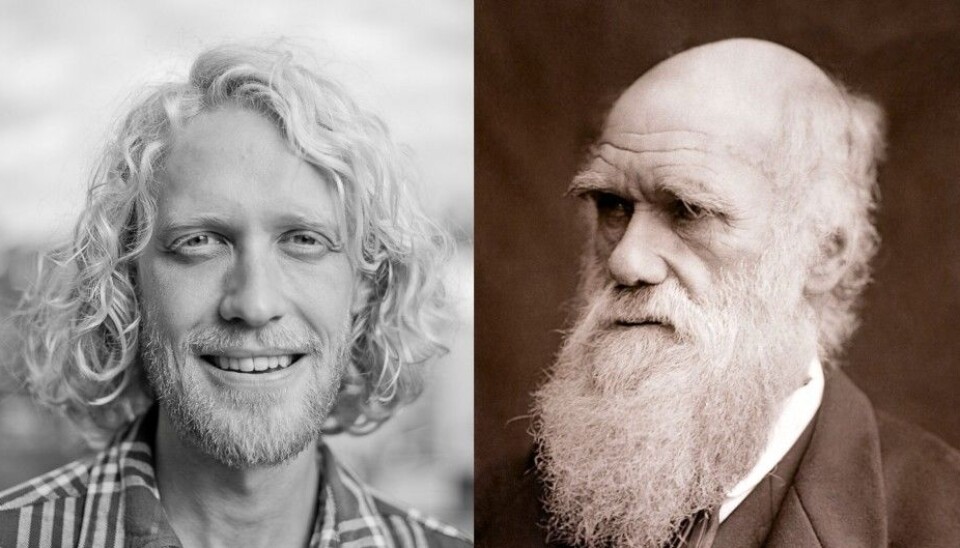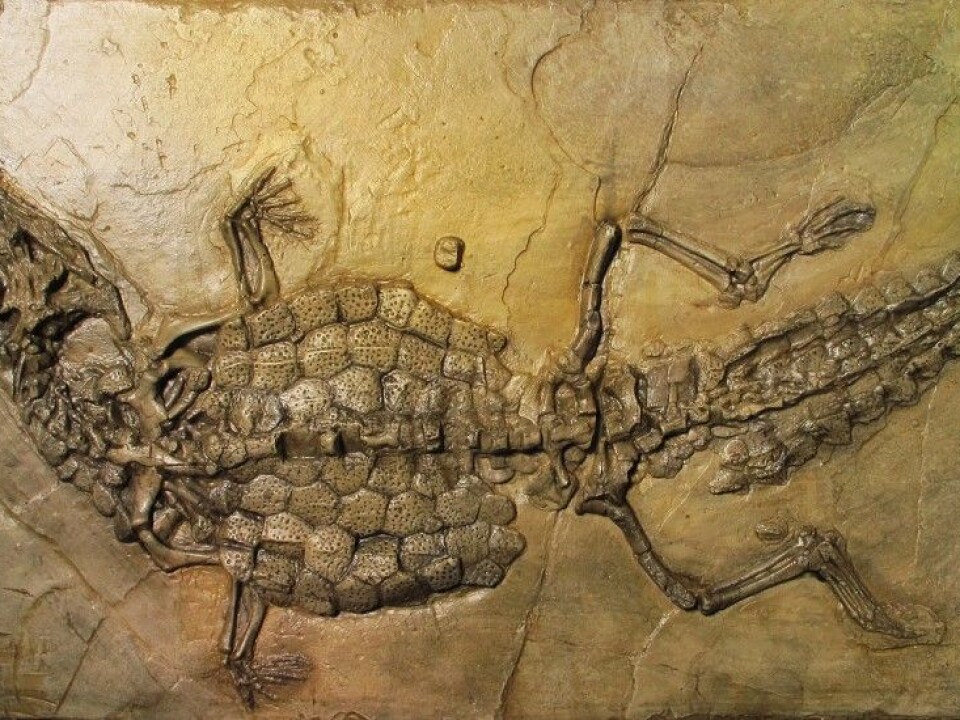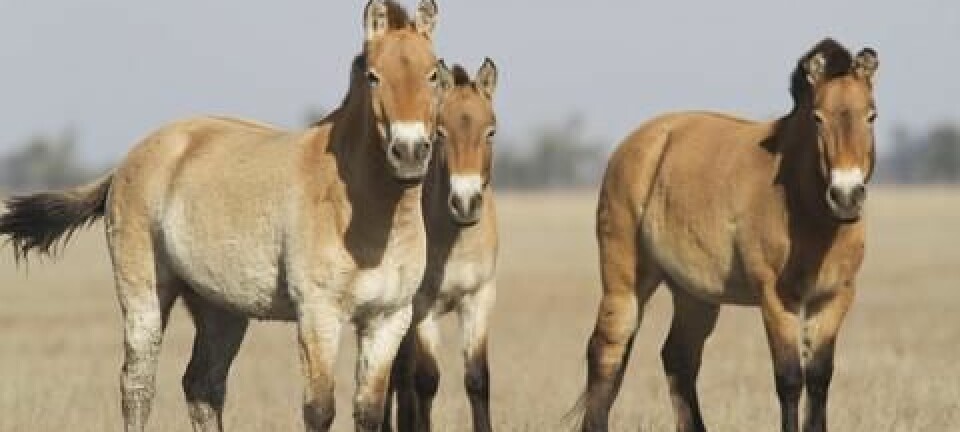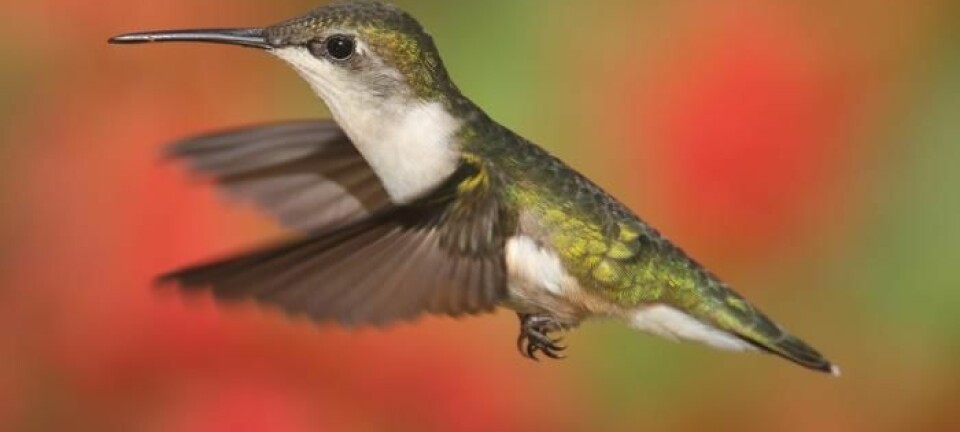
Norwegian researcher takes Darwin's theory a step further
Do species evolve in fits and starts or gradually?
Humans have always wondered how so many different animals and plants have come to populate the Earth. Many different explanations have emerged through the centuries, but Darwinian evolution has been the prevailing theory since the mid-1800s.
His theory describes how the species have evolved from the same origin through gradual, continuous change, constantly dying out by natural selection over millions of years.
Although Darwin's explanation still holds strong, it has been challenged. Observations of ancient fossils pose one of the challenges. The fossils do not reflect gradual changes or transitional forms that connect the different species.
Not enough fossils?
Darwin himself pointed to this as the biggest problem of his theory, but he attributed it to the lack of fossils. He believed that these transitional forms could not be found because they had not been deposited as geological material.

This led to the perception that the fossil record is incomplete.
But in the 1970s two scientists, Niles Eldredge and Stephen Jay Gould, questioned this consensus by turning the problem upside down:
What if there’s nothing wrong with the fossil record, but rather with the view of evolution as a gradual step-by-step process? Eldredge and Gould proposed a new hypothesis called punctuated equilibrium, where the evolution of a generally stable species is “punctuated” by a rapid burst of change.
This theory assumes that the breaks in fossil records are not due to a lack of fossils, but rather to species actually being stable for a long time, called stasis, only to be interrupted from time to time by large and rapid changes.
Interpreting the fossils using this theory, we see that it is much more common for species to remain unaltered than it is for them to develop.
The punctuated evolution theory became popular. The new consensus among scientists was that little evolution takes place during stasis, while major, rapid evolution happens when new species form.
Didn’t quite make sense
But the theory doesn’t address a big problem. In living species today, research shows that Darwin's gradual and continuous evolution is widespread and that it is occurring much faster than one would expect according to Eldredge and Gould's stasis idea.
Usually we think of evolution as gradual changes that take place over time, but they can also occur across geographic regions.
A species may consist of a number of populations of animals or plants, which interbreed with neighbouring populations. In some cases, the ends of this series of populations meet each other and form a ring. This is called a ring species.
The greenish warbler (Phylloscopus trochiloides) is just such a ring species. The bird lives in Central Asia where it has spread to the east and to the west of the Tibetan plateau, meeting again on the north side. Although the two end populations coexist, they are too distantly related to interbreed. So they would appear to be two different species, connected by a ring of gradually changing populations.
This is something that Eldredge and Gould’s theory cannot explain.
Accepting that current evolution is constant and gradual, while long–term evolution occurs in fits and starts seems unsatisfactory.
Some rethinking was needed here.
And this is what Kjetil Lysne Voje at the University of Oslo’s Centre for Ecological and Evolutionary Synthesis has done. He had the idea that gradual evolution could be reconciled with the fossil records by showing that all species are constantly changing, even when they seem to be stable.
To this end, he undertook a thorough investigation of 450 different fossil series, studying how these species have evolved over time.
Evolution, but not change
Voje found out that a whole lot of evolution happens during stasis.
“This is a poor fit with the original theory of punctuated equilibrium, which claims that evolution practically stands still, and then explodes with speciation. My findings suggest that evolution is just as fast whether it’s in stasis or leads to major changes over time,” Voje says.
This idea uncovers a lot of evolution where it was previously thought not to exist. Voje’s results were recently published in the journal Evolution.
But how can it be that species are evolving even if they don’t change?
The explanation is that species change, but that the change takes place in a kind of back-and-forth evolution, so while the net change is quite small, the overall change is considerable.
You can compare this to running around in circles: when you run 15 laps around the track, you haven’t moved very far in the landscape, but you’ve still covered several kilometres.
Species usually go extinct
According to Voje, a species that is relatively well adapted to its environment won’t change very much without any major changes happening around it.
“But,” he says, “when big changes in happen in the environment, we get big evolutionary changes.
These major changes appear to be relatively rare and only appear in 53 of the 450 lineages that Voje studied.
Why don’t scientists see more changes in a certain direction?
There are many possible explanations, but evolution probably has several limitations.
“The most common fate is extinction. We’ve lost most life forms,” he says.
So it's probably not that easy just to evolve in hard times, but it does happen occasionally. Why do species sometimes take big evolutionary jumps?
The winning gets lost in the spinning
Lee Hsiang Liow, associate professor of evolutionary biology at the University of Oslo, says nobody really knows what lies behind the big changes, but they always take place within certain natural limits.
“The most logical reason why we see so little change, is that animals and plants have to cope with many different problems to survive and have offspring. And improving one characteristic sometimes happens at the expense of another,” Liow says.
She compares this notion with a ceiling fan. Ideally, you want a very large fan in order to move the most air around to maximize the cooling effect. But if it’s too large, the motor will produce so much heat that "the winning gets lost in the spinning.” The fan size has to balance the cooling effect with the heat production. Different fan sizes don’t vary all that much.
Liow stresses that there can be multiple reasons why major changes are unusual, and the causes can vary from species to species.
“Fossil data has been studied in similar ways before, just not in exactly the same fashion that Voje has done. But by seeing things in a slightly different light, you can have a eureka moment,” says Liow.
References:
Eldredge & Gould: “Punctuated equilibria: an alternative to phyletic gradualism”
(1972) (essay, including pages 82-115 "Models in paleobiology")
Kjetil L. Voje: Tempo does not correlate with mode in the fossil record. Evolution 2016 (Abstract)
































